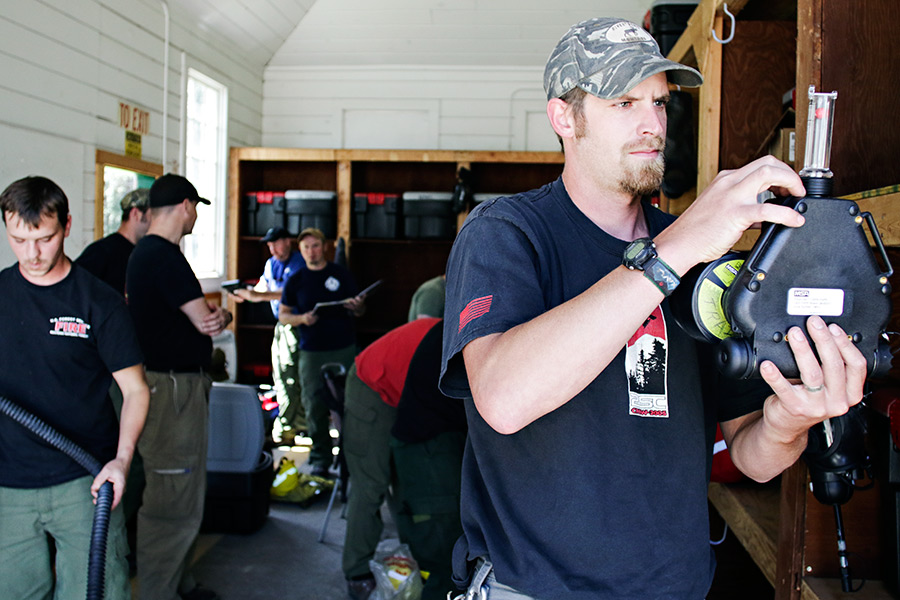EPA, USFS Allocate $2.1 Million to Support Firefighting Efforts at Asbestos Mine
Officials say the money will be used to expedite firefighting responses at shuttered mine
By Justin Franz
The Environmental Protection Agency and U.S. Forest Service are spending $2.1 million this summer to support and improve firefighting efforts at the shuttered W.R. Grace & Co. asbestos mine north of Libby.
Federal, state and local officials have long worried about the health impacts on both firefighters and the public should a wildfire break out near the asbestos mine, which was at the center of one of the largest environmental contaminations in U.S. history. Asbestos can be found in the bark of trees in and around the mine in a 47,000-acre area designated Operable Unit 3, or OU3.
Since the mid-2000s, the USFS has stationed a team of firefighters in Libby that is specially trained to deal with fires in OU3. Although in years past the USFS tried to fight all blazes near the mine from the air, that method proved ineffective. Now if a fire breaks out, the firefighters go in wearing respirators. They also have to decontaminate themselves after being exposed to the smoke and dirt inside OU3.
Traditionally, funds for the OU3 firefighters came from the USFS, but Kootenai National Forest District Ranger Nate Gassman said that money was never guaranteed. This month, however, the EPA and USFS signed a joint-action memorandum to dedicate funding to the effort on an annual basis, starting with the 2016 fire season.
Gassman said the money would be used to ensure that firefighters have the equipment they need and that a firefighting helicopter is always available to douse a blaze in OU3. Currently, if a blaze breaks out near the mine, firefighters would have to wait like everyone else for air resources, but now the Libby-based crews will have priority when it comes to ordering aircraft.
“This action memo will ensure that funding is always available to have resources dedicated to OU3,” EPA Project Manager Christina Progress said. “This solidifies our commitment to fighting fire in OU3.”
Over the last few years, the EPA and USFS have tried to study what happens when asbestos-infested trees catch fire. Officials say those tests have only confirmed their concerns about firefighter and public safety. Should a fire start inside OU3, state, local and federal officials would deploy air-monitoring stations around the area to ensure that the air is safe to breathe.
W.R. Grace is currently working with the EPA on preparing two separate feasibility studies that will look at how OU3 should be cleaned up. One study will focus on the forested area around the mine, and the other will include the mine site and nearby rivers. Officials hope to finish both by late 2016 or 2017. Once those studies are completed, the EPA will put together a proposed cleanup plan and then issue a record of decision.